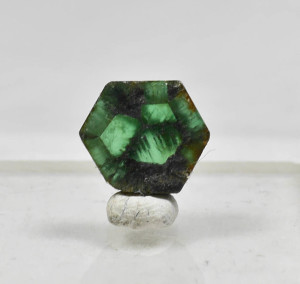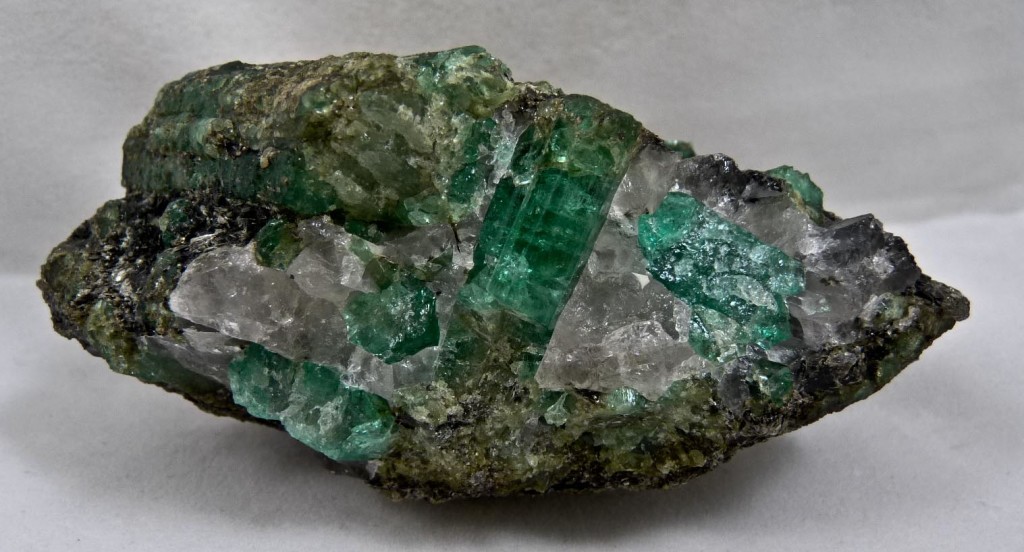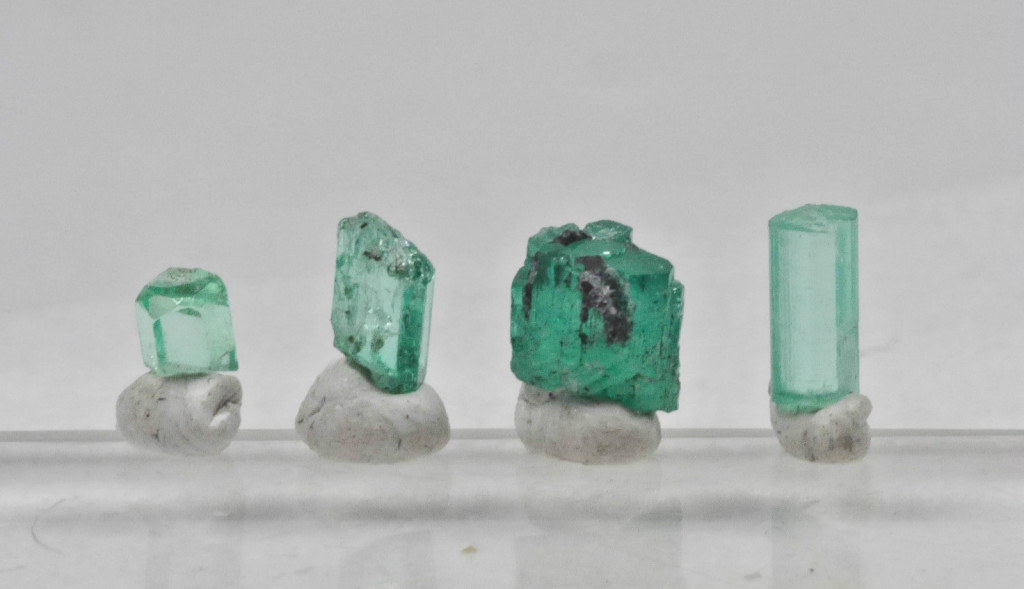 Emerald is a type of the mineral beryl Be3Al2(SiO3)6. This type of crystal is normally recognized by its green colorization which is formed from trace amounts of chromium and occasionally vanadium. In terms of hardness and resistance an emerald is usually quite strong. Because of the formation of the crystal emeralds generally have rocks and other pieces included in their formation which can make the growing room for the crystals quite small and limit gem crystal portions of the stone.
Emerald is a type of the mineral beryl Be3Al2(SiO3)6. This type of crystal is normally recognized by its green colorization which is formed from trace amounts of chromium and occasionally vanadium. In terms of hardness and resistance an emerald is usually quite strong. Because of the formation of the crystal emeralds generally have rocks and other pieces included in their formation which can make the growing room for the crystals quite small and limit gem crystal portions of the stone.
Emerald deposits can be found all over the world and there are plenty of fine spots to mine emeralds. Columbia is by far one of the largest miners and exporters of emeralds constituting at least 50% of the entire world’s emerald supply. Columbia is also home to some extremely rare forms of emeralds which can be mined in this area known as the trapiche emerald. A trapiche emerald is usually characterized by its natural formation in a star pattern which produces an extremely rare and beautiful stone. Emerald deposits can also be found in Zambia, Afghanistan, Australia, Brazil, Canada, China, Egypt, India, Austria, Norway, Somalia and more. The United states have even been known to uncover emerald deposits on their soil, specifically in North Carolina. Synthetic emeralds have also been produced with the main manufacturer of manufactured emeralds being Russia. These types of emeralds are not valued as highly but they do find some uses.
Valuing an emerald has to do with the type of color, the clarity of the stone and the amount of treatments that the stone has had. In many cases an emerald will be classified differently if it does not have enough of a green hue or color to it or if it is not clear enough. Treatments can also be done to increase the amount of clarity found in the stone and to make the surface much smoother. Treating a stone can increase its value as well.

An emerald can have a number of different meanings in culture and lore. Emeralds are used as the traditional birthstones for the month of May in some cultures. Many historic tales of explorers visiting Columbia and bringing back large emeralds also exist, such as a few about Cortez returning to Europe with large emeralds one of which was noted to be engraved with a bible verse, and found to be extremely rare. Emeralds have always been used historically as symbols of value and in traditional jewelry and more. Emeralds have been known to give good luck, and also have been believed to increase the length of a person’s life in many forms of traditional medicine and religion.
Today however, emeralds have found many uses in the past emeralds have been used for medical treatments and to prolong life and cure disease. Today some forms of metaphysical medicine practitioners still use emeralds to focus life energy and work to heal the body. As well emeralds can still be found in many forms of jewelry. People will put emeralds into rings, earrings, pendants and more. Jewelers have even been known to make emeralds into beads which can be worn similar to pearls in some forms of jewelry.
Emeralds will continue to have meaning in our lives and continue to hold a valuable market for emerald miners ad jewelry producers for many years to come.
Emerald is a bright green chromium rich variety of the mineral beryl, a beryllium aluminum cyclosilicate- Be3Al2Si6O18. Emerald is an extremely valuable precious gemstone which has been known by humanity since ancient times. The Egyptians even prized the stone as far back as 2000BC. Previous to analyses performed in the 1990’s by famous chemist Louis Vauquelin, emerald was thought to be distinct from beryl. Vauquelin, who discovered the elements chromium and beryllium identified that emerald was just a chromian beryl and not a unique mineral as previously thought. Some emerald is also colored green by vanadium in addition to chromium. Vanadian emerald has a slightly more blue color than pure chromium emerald. The word emerald has a complex history, but to simplify it, it originates from the Old French word ’emeraude,’ which in turn came from the ancient Greek term ‘smaragdos,’ meaning green gem.
Historically, emeralds have been mined from Europe and the Middle East from ancient times through the Middle Ages. The most historic locations in this area were Egypt, whose mines produced stones as long ago as 200BC, as well as India, Afghanistan, Austria, Norway, and Spain. Nowadays, all of these localities except for those in Afghanistan are not commercially mined though they have continued to produce fine crystals.
Nowadays, the bulk of emerald crystals (around 80%) originate in the Boyaca Department of Colombia with lesser quantities coming from Zambia, South Africa, Australia, Russia, and Brazil. Mozambique and Madagascar have been known to produce fine crystals colored by both vanadium and chromium. The largest open pit emerald mine in the world, the Kagem mine was recently constructed in Zambia. It encompasses an area of one square kilometer and produces anywhere between 15 to 20 percent of the world’s supply. The Brazilian emerald mines are known for their production of very large crystals thought they are on the cloudier side.
Emeralds forms in a very unique environment. It is uncommon that beryllium and chromium occur together naturally in great quantity which is the reason why emerald is one of the rarest varieties of beryl. Emerald forms in environments where ultramafic and felsic igneous rocks contact each other. The ultramafic rocks provide the chromium needed for emerald’s green color to beryl that forms in melt diffusing from the felsic rock.
Emerald gemstones are only rarely flawless. Emerald is expected to have inclusions and feathering though many practices are used to minimize their appearance. Treatment of cut emeralds with cedar oil is a popular, commonly disclosed, and widely accepted enhancement method. Sometimes, other enhancement methods such as polymer or glass filling is used to artificially improve luster of emerald.
Emeralds can be grown very successfully through synthetic methods. Typically, they are grown from a flux or hydrothermally. Some methods use natural emerald seed crystals as well. Many synthetic crystals are inclusion free and optically flawless so they are often easily distinguished from natural emerald.

